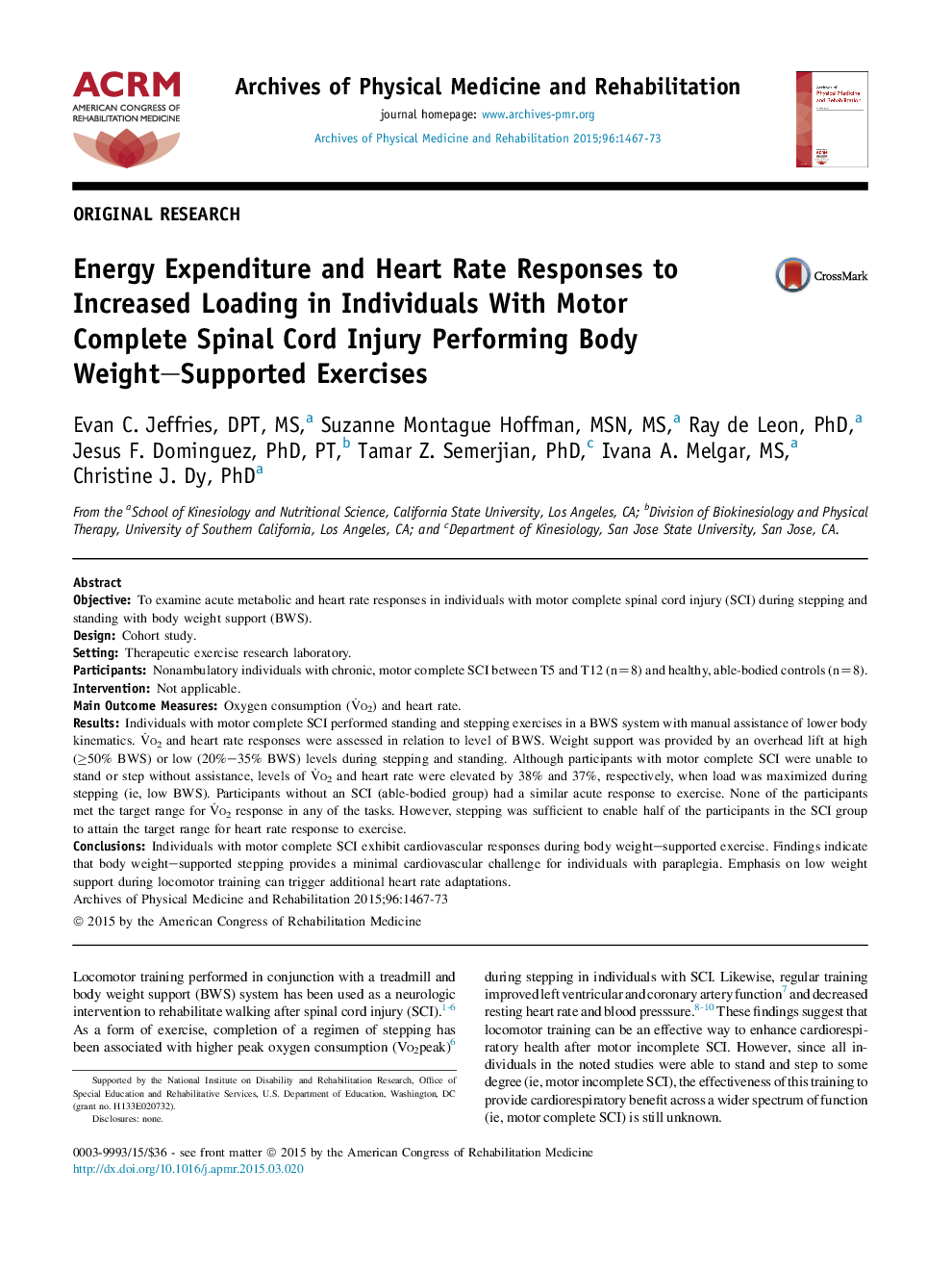| Article ID | Journal | Published Year | Pages | File Type |
|---|---|---|---|---|
| 3448303 | Archives of Physical Medicine and Rehabilitation | 2015 | 7 Pages |
ObjectiveTo examine acute metabolic and heart rate responses in individuals with motor complete spinal cord injury (SCI) during stepping and standing with body weight support (BWS).DesignCohort study.SettingTherapeutic exercise research laboratory.ParticipantsNonambulatory individuals with chronic, motor complete SCI between T5 and T12 (n=8) and healthy, able-bodied controls (n=8).InterventionNot applicable.Main Outcome MeasuresOxygen consumption (V˙o2) and heart rate.ResultsIndividuals with motor complete SCI performed standing and stepping exercises in a BWS system with manual assistance of lower body kinematics. V˙o2 and heart rate responses were assessed in relation to level of BWS. Weight support was provided by an overhead lift at high (≥50% BWS) or low (20%–35% BWS) levels during stepping and standing. Although participants with motor complete SCI were unable to stand or step without assistance, levels of V˙o2 and heart rate were elevated by 38% and 37%, respectively, when load was maximized during stepping (ie, low BWS). Participants without an SCI (able-bodied group) had a similar acute response to exercise. None of the participants met the target range for V˙o2 response in any of the tasks. However, stepping was sufficient to enable half of the participants in the SCI group to attain the target range for heart rate response to exercise.ConclusionsIndividuals with motor complete SCI exhibit cardiovascular responses during body weight–supported exercise. Findings indicate that body weight–supported stepping provides a minimal cardiovascular challenge for individuals with paraplegia. Emphasis on low weight support during locomotor training can trigger additional heart rate adaptations.
